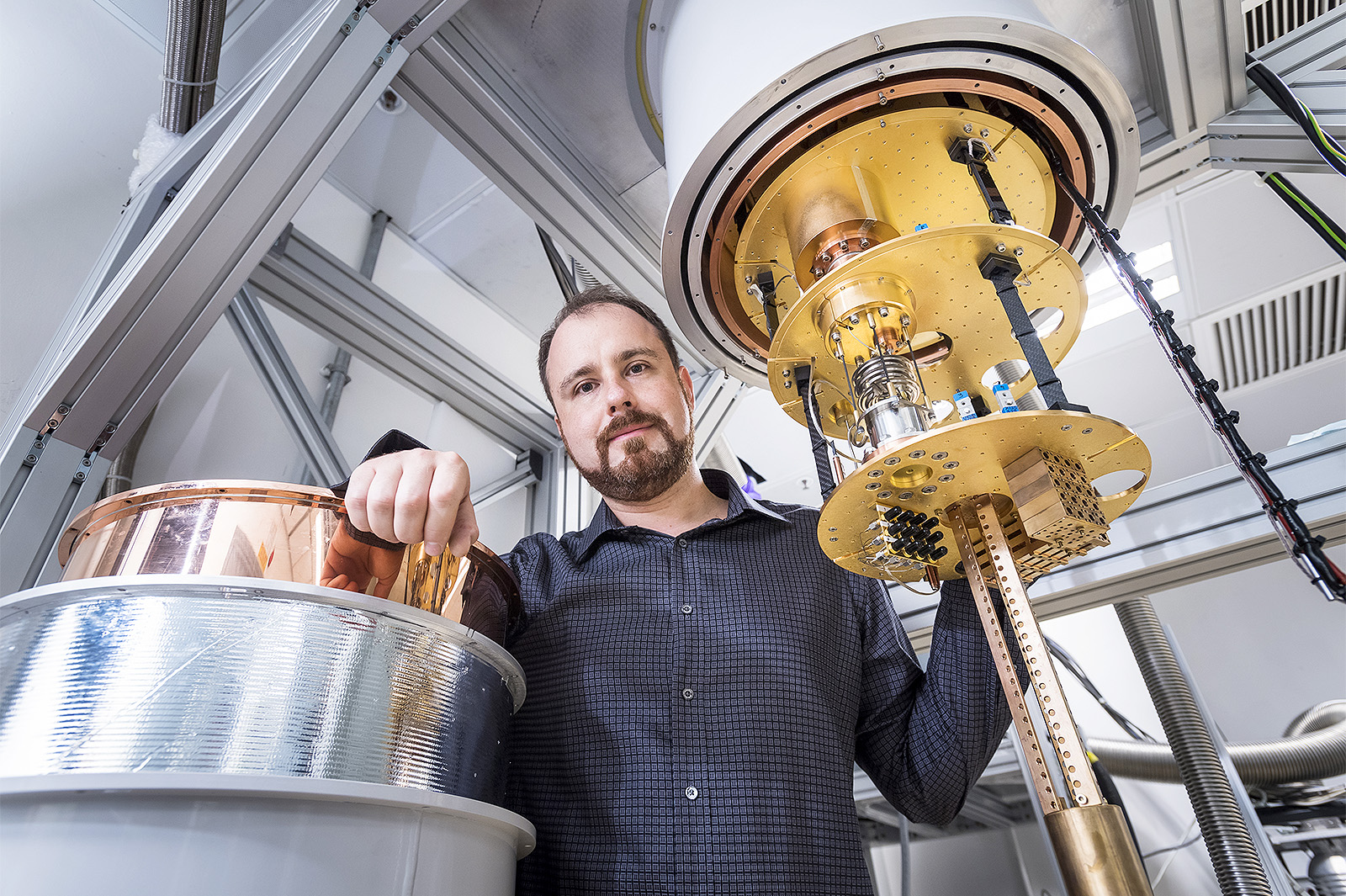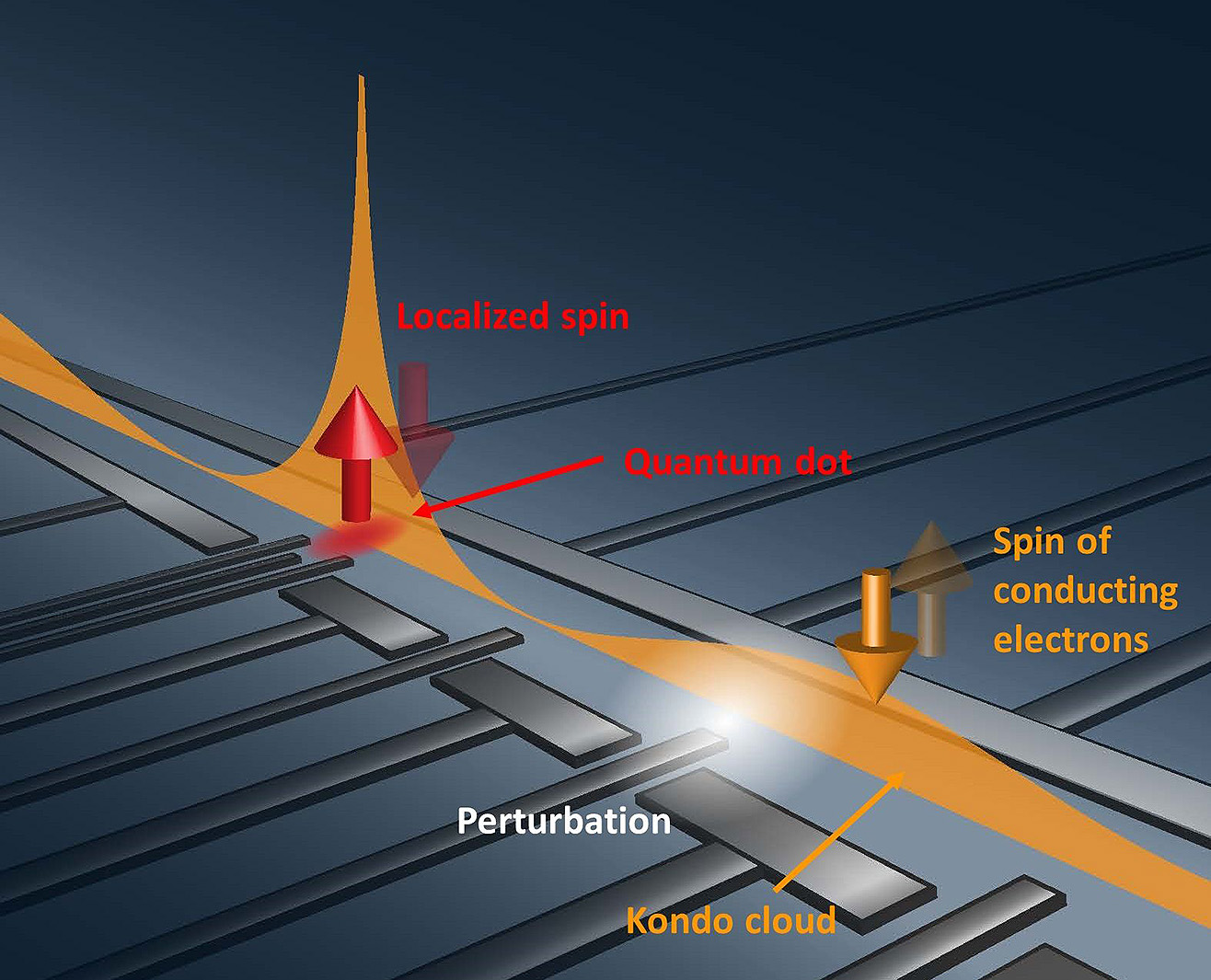Kondo cloud finally observed after half-century

A physicist from City University of Hong Kong (CityU) plays a major role in the world’s first direct measurement of a Kondo cloud more than 50 years after the initial theory was first expounded.
Dr Ivan Valerievich Borzenets, Assistant Professor in the Department of Physics, has helped to reveal the first experimental evidence of a Kondo cloud.
The Kondo cloud was theorised half a century ago but until now it has not been observed, according to Dr Borzenets, who has worked on the Kondo project as part of an international research team.
This breakthrough in condensed matter physics could contribute to further understanding multiple impurity systems such as high temperature superconductors, he added. High temperature superconductors can be used in a variety of applications such as energy storage system and medical equipment.
The Kondo cloud describes the area around the magnetic impurity where the Kondo effect plays a role. The experiment offers proof that the size, or length, of a Kondo cloud and Kondo temperature are related mathematically.
This confirmed observation marks an important milestone after more than 55 years since the theory was first postulated by Japanese theoretical physicist Dr Jun Kondo.
“The Kondo temperature is the critical temperature where the Kondo effect starts to play a role,” said Dr Borzenets. In metals, electrical resistance usually falls as the temperature drops. But if there are some magnetic impurities in the metal, resistance will drop at first. When a threshold temperature is reached, resistance will increase as the temperature decreases further.

“We hope the findings can provide insights into the understanding of multiple impurity systems such as Kondo lattices, spin glasses and high transition-temperature superconductors,” explained Dr Borzenets, the lead author of an article titled “Observation of the Kondo screening cloud” published in the latest edition of the prestigious scientific journal Nature.
Following repeated experiments with a device specially developed by the team over a three-year period, the cloud was measured as a few micrometres across.
It is challenging to isolate and manipulate both a single magnetic impurity and a single cloud. Now, with the instrument developed by the international research team and the application of quantum mechanics, this has been achieved. The impurity was housed in a quantum dot, also referred to as a “conducting island”, that is a just a few hundred nanometres wide. The cloud was confined in a quasi-one dimensional channel (an interferometer), the manipulation of which allowed the team to detect and control the cloud length.
Dr Borzenets was joined on the project by Dr Shim Jeong-min and Professor Sim Heung-sun of the Korea Advanced Institute of Science and Technology; Dr Jason C.H. Chen of the University of Tokyo; Dr Arne Ludwig and Professor Andreas D. Wieck of Ruhr-University Bochum, Germany; and Professor Seigo Tarucha and Dr Michihisa Yamamoto of RIKEN Centre for Emergent Matter Science, Japan.
